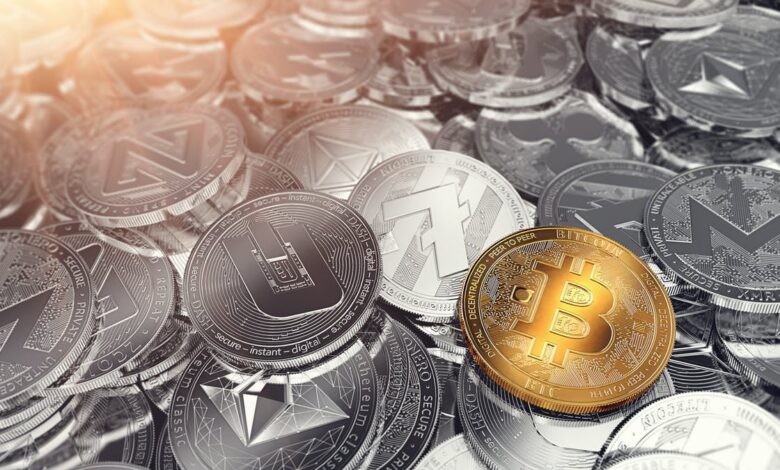The number of ‘dead’ coins increase by 35% over last year as the popularity of Bitcoins and other cryptos grows

There’s another cryptocurrency news making headlines in the market and you don’t need to act shocked because along with novel coronavirus caused COVID-19 disease, it’s all we hear about these days. However, the news this time is a little different from our usual and let’s just say it is not a good one for the people that root for cryptocurrencies. It is because the number of dead coins, which stood at 1,440 around the month of February last year, has taken a 35 per cent hike to reach the number 1,949 right now. This 35 per cent increase over the last year is not a good sign, but before we talk about what’s and how’s of the situation, let’s understand the story behind these dead cryptocurrencies.
While cryptocurrencies are seen as the face of revolution and tech, not all cryptocurrencies have proved to be worth the hype. Well, looking at the current number that has touched 1,949, it would be fair to say an awful lot of them have proved to be in the latter category because of the fact that they provide minimal to no real value to the holder. Anybody who has been a part of the cryptocurrency evolution would remember what it all began with- the Initial Coin offering, back in 2017. This movement created the proliferation of coins in the crypto industry with the number of available options rising from 29 to over 850. Sooner in 2018, developers launched more than 1200 projects, with the number increasing ever since such that by December last year, the total number of cryptocurrencies reached a total of about 8,000. As of March 3, 2021, there were 9,108 cryptocurrencies in circulation led by Bitcoin (BTC) and Ethereum (ETH). However, as mentioned, a lot of these coins that were launched with great fanfare ultimately had zero benefits to the holders. Dead coins are usually the coins that suffered ignoble and often deliberate death as their creators cashed out users’ investments and left bag holders to wonder where the value of their portfolio went. The presence of dead coins also became significant after the 2018 scam called the ‘rug pulls’, with the likeliness of many investors still holding on to the dead crypto coins. So, any coin that doesn’t exist anymore for a reason like are used as a scam, their website remains down, they have nodes or wallet issues, they have low liquidity or have simply been abandoned and their development has been halted by their developers is called a dead coin. Abandoned coins are the ones that witness zero or negligible trading activity among investors. However, if there is a lack of information on the reasons why a coin died, it falls into the default abandoned category.
So, while a lot of entrepreneurs and businesses went for Initial Coin Offerings, raising a total of USD 4.9 billion during the year as per data provided by the Crunchbase, the number of dead coins gained momentum, resulting in the number reaching close to 2000. If reports are to be believed, it is estimated that 80 per cent of all 2017 Initial Coin Offerings were in fact scams and have cost investors millions of dollars. The basic purpose of Initial Coin offerings, however, was to create new blockchain-based crypto or related apps and services. As years passed, this dead coin thing became a trend with people entering with the sole motive to trap people in the forms of scams, false schemes and abandoned projects that lured investors with promises of high returns that turned into hollow words soon after investors made the investment. Not only that, but they are also projects that sometimes have low liquidity or have insufficient funding.
“On the crypto meter, they are so-called “s***coins” that have been flushed of all value but continue to float around in the murky depths of crypto’s most depressing blockchains, devoid of all hope, abandoned for all eternity, running out of oxygen on the race to the moon.”
As a result, there’s an increasing need to identify these dead coins and be aware of them, if the future in cryptocurrencies is to be sustained. So, if there’s a doubt about a coin being dead as it has vanished from your balances, you can ensure your doubt by going on websites such as Coinospy and Deadcoins that keep track of deceased crypto projects floating around in the dead space. Oh, you can also report some new dead coins that you come across but can’t find on these websites, in exchange for money and recognition from the websites. Every bonafide project starts with high expectations and best intentions, believing fervently that they’ll find favour among cryptocurrency traders. However, some of them quickly fall victim to low trading volumes, due to limited listings on leading exchanges. In the cryptocurrency space, up to 60 per cent of all projects have inferior liquidity. Generally, low trading volumes imply that the crypto-asset lacks either the utility or trader interest, and this leads swiftly in most cases to abandonment. It’s estimated that six in ten coins with negligible volumes are no longer supported by their developers. Platforms tracking dead coins consider a cryptocurrency dead or abandoned if it has had a trading volume of less than USD 1,000 within three months. Hence, keep your eyes open for any such signs before you invest in any coin whose promises and returns seem too good to be trusted. Many other signs like Joke coins and No funding coins are cases to look out for, in order to be able to save yourself and the crypto industry from going down.




